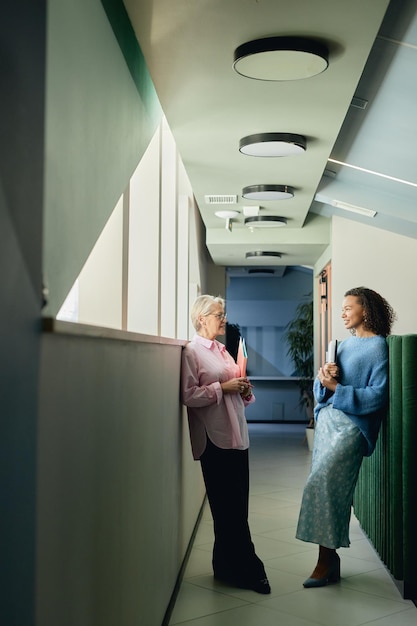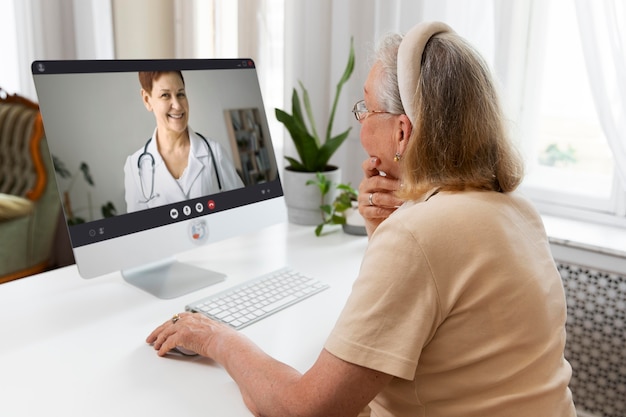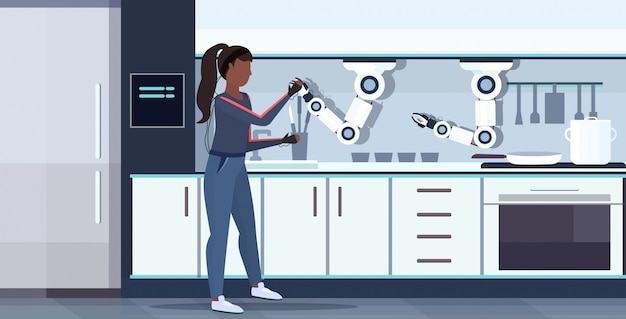The Future of Senior Care: Latest Assisted Living Technologies

The Future of Senior Care: Exploring the Latest Assisted Living Technologies examines how innovations like telehealth, AI-powered monitoring, and smart home features are transforming senior care, enhancing independence, and improving the quality of life for older adults.
The future of senior care is rapidly evolving, driven by technological advancements that promise to revolutionize how we support and care for our aging population. The Future of Senior Care: Exploring the Latest Assisted Living Technologies is not just about keeping seniors safe; it’s about enhancing their independence, dignity, and overall quality of life.
Understanding the Current Landscape of Senior Care
The senior care industry is facing unprecedented challenges. As the baby boomer generation ages, the demand for quality care is surging, putting pressure on existing resources. This situation necessitates innovative solutions to meet the evolving needs of seniors while maintaining affordability and accessibility.
The Growing Demand for Senior Care
The senior population is growing at an accelerated rate, leading to a greater need for assisted living facilities and home care services. Understanding this demographic shift is crucial for planning and developing effective care strategies that can cater to the unique needs of aging adults.
Challenges Faced by Care Providers
Senior care providers are grappling with various challenges, including staffing shortages, rising operational costs, and the need to adopt new technologies. Addressing these issues is essential to ensure the sustainability and quality of care services in the long run. Embracing new technologies and innovative care models is key to overcoming these obstacles.
- Staffing Shortages: Attracting and retaining qualified caregivers.
- Rising Costs: Balancing quality care with affordability.
- Technology Adoption: Integrating new systems to improve efficiency and care quality.
In summary, the current landscape of senior care is characterized by increasing demand and significant challenges. This underscores the importance of exploring and implementing innovative technologies to enhance the quality of care and address the evolving needs of the aging population.

Telehealth Solutions for Remote Monitoring
Telehealth is revolutionizing senior care by providing remote monitoring and virtual consultations, allowing seniors to receive medical attention from the comfort of their homes. This technology not only improves access to healthcare but also enhances the overall quality of life for older adults.
Benefits of Remote Health Monitoring
Remote health monitoring enables continuous tracking of vital signs and health metrics, allowing caregivers to detect potential issues early on and intervene promptly. This proactive approach can significantly reduce hospital readmissions and improve health outcomes for seniors.
Virtual Consultations and Telemedicine
Virtual consultations provide seniors with convenient access to medical professionals, eliminating the need for travel and long waiting times. Telemedicine is particularly beneficial for those with mobility issues or living in remote areas, ensuring they receive timely and appropriate care. These consultations can range from routine check-ups to specialized medical advice, all delivered through secure online platforms.
- Improved Access: Reaching seniors in remote or underserved areas.
- Reduced Costs: Lowering expenses related to transportation and facility visits.
- Enhanced Monitoring: Continuous tracking of vital signs and health metrics.
To summarize, telehealth solutions offer significant advantages for remote monitoring in senior care. By leveraging technologies like remote health monitoring and virtual consultations, healthcare providers can enhance access to care, reduce costs, and improve health outcomes for the aging population.
AI-Powered Assistive Technologies
Artificial intelligence (AI) is transforming senior care by providing personalized assistance and support to older adults. AI-powered technologies can help seniors maintain their independence, safety, and cognitive function, enhancing their overall well-being.

AI for Cognitive Support
AI-driven applications and devices can provide cognitive support to seniors by offering memory aids, reminders, and interactive games. These tools can help slow cognitive decline and improve overall mental acuity, fostering a sense of engagement and mental stimulation.
Robotics and Automation in Care
Robotics and automation play a crucial role in senior care by assisting with tasks such as medication management, mobility support, and companionship. These technologies can alleviate the burden on caregivers and provide seniors with increased independence and assistance. Robots can also be programmed to perform repetitive tasks, freeing up caregivers to focus on more personalized care.
- Personalized Assistance: Tailored support based on individual needs.
- Enhanced Safety: Real-time monitoring and alert systems.
- Improved Engagement: Interactive tools that stimulate cognitive function.
In conclusion, AI-powered assistive technologies are set to revolutionize senior care by providing personalized support, enhancing safety, and improving cognitive function. By leveraging AI, robotics, and automation, care providers can offer more effective and compassionate care to the aging population.
Smart Home Integration for Enhanced Safety
Integrating smart home technology into senior living environments enhances safety, security, and overall quality of life for older adults. Smart home devices can monitor activity, detect falls, and provide automated assistance, ensuring a secure and comfortable living space.
Fall Detection and Prevention
Smart home systems equipped with sensors can detect falls and automatically alert caregivers or emergency services. These systems use advanced algorithms to monitor movement patterns and identify sudden changes that may indicate a fall, providing immediate assistance when needed.
Automated Lighting and Temperature Control
Automated lighting and temperature control systems can create a comfortable and safe environment for seniors. These systems adjust lighting levels and room temperatures based on preferences and environmental conditions, reducing the risk of accidents and promoting better sleep. These features can be especially beneficial for seniors with visual impairments or mobility issues.
- Increased Security: Monitoring systems and emergency alerts.
- Comfort and Convenience: Automated adjustments for lighting and temperature.
- Proactive Assistance: Fall detection and immediate response.
In summary, smart home integration offers significant benefits for enhancing safety and comfort in senior living environments. By leveraging technologies like fall detection and automated controls, care providers can create a secure and supportive living space that promotes independence and well-being for older adults.
Wearable Technology and Health Tracking
Wearable technology is becoming increasingly popular in senior care, providing continuous health tracking and personalized insights. Devices like smartwatches and fitness trackers monitor vital signs, activity levels, and sleep patterns, empowering seniors to take control of their health and well-being.
Monitoring Vital Signs and Activity Levels
Wearable devices continuously monitor vital signs such as heart rate, blood pressure, and oxygen saturation, providing valuable data for healthcare providers. These devices also track activity levels, encouraging seniors to stay active and maintain a healthy lifestyle. The data collected can be used to identify potential health issues early on and intervene proactively.
Emergency Alert Systems
Many wearable devices come equipped with emergency alert systems that allow seniors to quickly call for help in the event of a fall or other emergency. These systems provide peace of mind for both seniors and their families, ensuring that assistance is always just a button press away. Some devices even have automatic fall detection, alerting emergency services even if the senior is unable to press the button.
- Comprehensive Tracking: Monitoring vital signs, activity levels, and sleep patterns.
- Immediate Assistance: Emergency alert systems for quick response.
- Personalized Insights: Data-driven recommendations for better health management.
In conclusion, wearable technology offers a powerful tool for health tracking and personalized care in the senior population. By providing continuous monitoring and immediate access to assistance, these devices empower seniors to manage their health effectively and maintain an active, independent lifestyle.
The Role of 5G and Enhanced Connectivity
5G technology and enhanced connectivity are set to play a significant role in the future of senior care, enabling faster data transmission, more reliable communication, and improved access to telehealth services. This enhanced connectivity supports real-time monitoring and remote assistance, enhancing the effectiveness of care.
Enhanced Data Transmission and Real-Time Monitoring
5G technology enables faster data transmission, allowing for real-time monitoring of vital signs and health metrics. This ensures that healthcare providers have access to up-to-date information, enabling them to make informed decisions and provide timely interventions. The speed and reliability of 5G also support the use of advanced AI and machine learning algorithms for predictive analytics.
Improved Access to Telehealth Services
Enhanced connectivity improves access to telehealth services, particularly in rural and underserved areas. Seniors can connect with healthcare providers through video consultations, remote monitoring, and virtual support groups, regardless of their location. This reduces barriers to care and ensures that all seniors have access to high-quality medical attention.
- Faster Data Transmission: Enabling real-time monitoring and analytics.
- Reliable Communication: Ensuring seamless connectivity for telehealth services.
- Broadened Access: Connecting seniors in rural and underserved areas.
To summarize, 5G technology and enhanced connectivity are vital for the future of senior care. By providing faster data transmission and improved access to telehealth services, these advancements enhance the effectiveness and reach of care, ensuring that seniors receive the support they need to maintain their health and well-being.
| Key Point | Brief Description |
|---|---|
| 🩺 Telehealth | Remote monitoring and virtual consultations enhance healthcare access. |
| 🤖 AI Assistance | AI aids cognitive support, automation, and personalized care. |
| 🏡 Smart Homes | Smart home tech improves safety through fall detection and automation. |
| ⌚ Wearables | Wearable devices track health and provide emergency alerts. |
Frequently Asked Questions
▼
Telehealth enhances senior care by providing remote monitoring, virtual consultations, and timely access to healthcare services, reducing the need for frequent hospital visits and improving overall health management from home.
▼
AI provides cognitive support through memory aids and interactive games, enhances safety with real-time monitoring, and offers robotic assistance for tasks like medication management, increasing independence and reducing caregiver burden.
▼
Smart homes enhance senior safety with fall detection systems that alert caregivers, automated lighting and temperature controls for a comfortable environment, and monitored security systems, ensuring a secure living space for older adults.
▼
Wearable technology offers continuous health tracking, monitoring vital signs and activity levels, and includes emergency alert systems for quick assistance. These devices empower seniors to manage their health proactively and maintain an active lifestyle.
▼
5G improves senior care through faster data transmission for real-time health monitoring, reliable communication for seamless telehealth services, and broadened access to healthcare in rural and underserved areas, ensuring comprehensive support.
Conclusion
The integration of telehealth, AI, smart home technology, wearables, and 5G connectivity paints a promising picture for the future of senior care. These advancements not only address current challenges but also pave the way for more personalized, efficient, and compassionate care, empowering seniors to live healthier, more independent lives.
